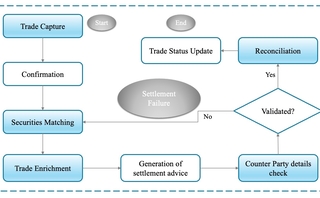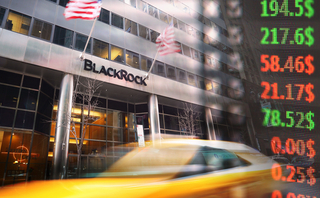
Goldman’s Marquee is a gradual revelation
Multiple apps are being corralled into a sticky cross-asset ecosystem, updated with Python and cloud
Need to know
- When it first launched in 2014, Goldman Sachs’ Marquee was hailed as a new model for single-dealer platforms
- One premium user, a hedge fund, describes Marquee as expensive but reliable, but larger asset managers are more cautious about plugging into bank systems.
- While liquidity on Marquee is limited to FX and commodities, the bank has plans to extend the execution offering to other asset classes.
- Derivatives pricing tool Visual Structuring can be combined with other analytics like Lego blocks, says platform head Chris Churchman, to help clients work out what to trade.
The whole of any system is greater than the sum of its parts. But first, you need the parts. In 2014, Goldman Sachs made a bold bid to create the ultimate cross-asset, single-dealer platform. Marquee allowed clients to access the firm’s famed SecDB pricing and risk system alongside its proprietary research, data and execution capabilities. Some of Goldman’s biggest wheels were its most powerful champions, including Marty Chavez, then the firm’s chief information officer—who was so closely associated with the project that insiders nicknamed it ‘Martee’.
But uptake was not as widespread as the firm may have hoped. In 2017, Chavez was elevated to chief financial officer, then left the bank in 2019. During that time, some started to ask if the platform was all it was cracked up to be. In 2017, one Goldman insider intimated that clients accessing SecDB via the platform were not getting the full power of the system’s in-built development environment. Another Goldman source described Marquee as “more hype than reality”.

Chris Churchman, who was brought in to spearhead Marquee in 2021, acknowledges the earlier criticisms but says the teething troubles have been addressed. “I think there was a bit of that years ago in the early days of the platform,” says the former UBS foreign exchange trading head and Oxford University fellow, adding: “Over the past few years, there’s been a doubling down on ‘let’s make Marquee work’.”
Instead of the platform being perceived merely as a collection of tools under one tent “that’s just called Marquee, like a canopy under which all of these client-facing applications live”, Churchman’s vision is for a complete ecosystem that naturally and across asset classes enables clients to go from their view on the world—which Goldman’s analytics will help form—to an expression of that view as a trade.
In other words, to transform the tent into a thriving community, where clients can access the firm’s analytics and trading capabilities and have plenty more reasons to stay. Or—ideally for Goldman—no reason to leave.
That community is certainly growing. The platform currently has more than 70,000 ‘monthly active users’, up from 50,000 in 2020, and 13,000 in 2019. Many of these users access Marquee for free; some use it for testing and as backup for their own systems, while others are happy to pay for premium access.
For the past 15 months, for example, Atlantic House Investments has been among Marquee’s premium subscribers. The firm’s deputy chief investment officer, Mark Greenwood, says that, although it’s “expensive”, it does “definitely help for trade idea generation”, and describes the platform as “very reliable”.
But some large buy-side firms question whether Marquee is for them.
The head of investment risk at one large investment firm with more than $300 billion of assets under management says bank offerings might be of more interest to a hedge fund running its own portfolios, rather than a big asset manager facing more complex operational issues.
[I am] passionate about the intersection of how trading floors work and building a platform that disrupts the status quo in that space … [but] wouldn’t necessarily compete with multi-dealer platforms
Chris Churchman, Marquee
A trading head at another large asset manager has free access to Marquee, connecting to its single-dealer FX platform for ‘point-and-click’ trading, but perceives potential operational risk. “There’s just too much manual-keying risk we potentially run by keying trades into single-dealer platforms,” he says. His other concern is that bank platforms do not demonstrate best execution by showing trades in competition and at the best available price.
Of course, some big asset managers have their own systems, and are reluctant to plug into bank platforms. The global trading head at one asset manager, with $150 billion under management, agrees that exporting exposures into an external system carries risks with manual keying. He also questions whether asset managers would feel comfortable sharing portfolio data with a bank platform.
Goldman asserts that portfolio-data privacy is its number-one priority. The Marquee portfolio analytics suite allows for the private upload of portfolios, which are walled off from the trading buiness.
And the bank naturally affirms its ability to serve this sector. “Goldman Sachs has deep, long-standing relationships with some of the largest asset managers in the world,” says a spokesperson. “We understand the complexity of their workflows, and with Marquee, we aim to complement those workflows with best-in-class technology and services to fit their needs.”
A large part of Churchman’s job, then, is to address some of the larger asset managers’ quibbles and bring more of them inside the tent.
Challenge accepted
Churchman acknowledges there are challenges to fulfilling his vision for Marquee as a full-service, sticky ecosystem.
Clients “need to work out what to trade, and they need multiple sources of liquidity”. To meet that need, a bank platform must answer all their questions on global markets in one place.
Churchman says Goldman’s approach to solving this problem is different from that of other banks. Building single-dealer platforms is where the sell side has traditionally put 99% of its effort, he says, optimizing them for the bank’s interest in most efficiently executing a trade on behalf of a client: “But, actually, 99% of a client’s time is spent working on what to trade in the first place.”
He is “passionate about the intersection of how trading floors work and building a platform that disrupts the status quo in that space”. But Marquee “wouldn’t necessarily compete with multi-dealer platforms”, he says, adding that he is more focused on what clients want, emphasizing that “an aggregator alone doesn’t help you work out what to trade”.
A related problem, Churchman says, is that, particularly with the growth of artificial intelligence-produced content, there is going to be an “information avalanche”. In that context, “the curation and credibility of Goldman Sachs is going to become a differentiator”.
But Marquee’s canopy is currently incomplete. It has no equities, rates or credit liquidity, as these are serviced by separate Goldman platforms. The bank is working to expand the platform to encompass asset classes such as credit and rates to cater for clients’ needs in both principal and agency liquidity, he says.
As equity market structure is complex and fragmented, Goldman’s aim with Marquee is to provide equities-focused clients with pre-trade analytics, custom basket workflows and portfolio analytics workflows to simplify client access to best-in-class third-party factor models.
And, as it extends the platform to more asset classes, having SecDB’s cross-asset infrastructure as the central pole is a help, says Churchman—unlike other banks, Goldman has not siloed its quant libraries, market data application programming interfaces (APIs) and conventions for how trades are represented.
In banks that are siloed, it’s almost impossible to roll anything out cross-asset because it’s almost a full rebuild every time, says Churchman. “Goldman’s done a really good job over the years of making hard choices about making the infrastructure cross-asset from the ground up. And with Marquee, we’re really focused on building a best-in-class platform that allows our clients to leverage that cross-asset infrastructure.”
Another challenge is that, underneath, the platform uses a proprietary programming language—Securities Language, or Slang—which is now considered dated.
What Slang has enabled, as a relatively easy language to learn for non-specialists, is Marquee’s development to be guided by Goldman’s front office, which intuitively brings to life applications for business use cases.
There’s just too much manual-keying risk we potentially run by keying trades into single-dealer platforms
Trading head at a large asset manager
But this is a double-edged sword, says one US bank head of technology, who is responsible for building the bank’s own in-house risk system. The “slightly hacky front-office-led development paradigm” relies on the belief that people who work in the front office will be high-class developers—but that is not always the case, contends the head.
This is debatable, but Goldman does offer opportunities for clients that want to do more with its system.
Much of what Goldman builds for clients as products “off the shelf” would be hard to improve upon, says Churchman, but if clients need custom analysis like backtesting that requires Python access to the bank’s models and data, that can be accommodated.
An open-source Python toolkit called GS Quant—which allows clients to develop, test and execute quantitative trading strategies on Goldman’s systems—sits on top of SecDB, for example. And Marquee now allows selected clients access through GS Quant to its quant libraries, in products such as FX.
“What it means is that a client can take their own portfolio, write a Python script in GS Quant, and upload their trade in a format that is viewable in, say, Visual Structuring or our portfolio analytics suite,” says Churchman, who compares the flexibility of the system to “a powerful bunch of Legos.”
Visual Structuring is a new Goldman tool for pricing derivatives (see box: Visualising techniques).
Together with cloud computing and advanced caching strategies, this means Goldman “can retain all the cross-asset benefits of SecDB while building modern and fast software applications”, says Churchman. He also argues that the benefits of having a cross-asset infrastructure such as SecDB vastly outweigh the downsides of it being written in an old language that can sometimes be slow.
Rich proposition
Snipes notwithstanding, it cannot be denied that Marquee’s proposition looks rich.
The platform gives clients access to Goldman’s trading and risk systems as well as its proprietary research, markets commentary, videos, podcasts, polls and a data catalog that can be called via APIs.
Through Marquee Trader, Goldman’s institutional clients can access liquidity and execute on live, streaming prices for FX and commodities products—both delta one and options—on the platform. It also offers algorithmic trading tools, pre-trade, intra-trade and post-trade analytics, and automation solutions for operational trading workflows.
Separate platform tools include credit portfolio analytics with a bond screener, letting clients analyze and customize a portfolio. In addition, prime clients can log into Marquee and use the services in the Prime Services portal to look at their positions and portfolios, while Marquee Connect is a digital cap intro system, connecting allocators and investors with investment managers.
And there is capability to plug in fancy tools—PlotTool Pro, for example, is a cross-asset time series analytics instrument with natural ‘typeahead’ intuitive syntax that leads to charting. It provides access to bespoke visualizations, and the ability to backtest trading strategies.
Atlantic House’s Greenwood describes PlotTool Pro as all about “generating whizzy content, trade ideas and charts to back them up using Goldman data”. His firm pays a separate subscription for this, on a per-user basis. As a systematic firm with its own “rules and recipes”, the investor relies less on bank trade ideas, and uses the tool more to examine market themes.
If Marquee could be improved from Greenwood’s perspective, he would like Goldman to bring new datasets such as US inflation front-end online. Atlantic House pays for equity index volatility, and also uses the platform for some FX vol.
In 2020, Goldman also became the first global investment bank to offer Bloomberg reference and pricing data for in-house applications provided to clients. Here, again, Churchman emphasizes that Goldman is looking to partner rather than compete with important infrastructure providers.
Goldman has also brought in third-party models and data to supplement its proprietary offerings. Marquee’s portfolio analytics suite, for example, allows clients to upload their equities portfolio, typically delta one, and manage it using best-in-class factor models such as Axioma, MSCI Barra, Quant Insight or Wolfe Research. The factor models can be bought through the bank via a distribution agreement.
Marquee names
Marquee’s clients include institutions, corporates and governments, as well as asset managers and hedge funds.
Quant funds are interested in the “low-latency API and raw data” of Marquee, says Churchman, as well as GS Quant. Goldman aims to compete with quant fund tech offerings from the likes of Morgan Stanley.
Over the past few years, there’s been a doubling down on ‘let’s make Marquee work’
Chris Churchman, Marquee
The question is whether Marquee’s will be enough to attain the vision that Churchman and others have for the platform. Can it tempt in some of those larger buy-side firms?
The head of investment solutions at an asset manager with more than $600 billion under management says it has its own tools for risk monitoring, and would rather have a direct relationship with vendors of portfolio analytics who it “knows do not care about our holdings or positions”.
He thinks the natural user base for Marquee consists mainly of smaller hedge funds. “Banks developed a variety of proprietary strategies in the past, and they may work with hedge funds to develop such strategies,” says the investment solutions head.
He nonetheless sees an advantage for some systematic strategies—if the investor is going to execute with the bank anyway—in using its systems to make them faster to market. But with respect to accessing a bank’s quant libraries, he wonders how useful those signals are if they are shared by a number of clients.
A senior executive at an asset manager with more than $100 billion under management says he does not have the time to “weaponize” bank platforms. “We’ve already built ways of looking at this stuff. The last thing I need is to try to learn someone else’s method for looking at it.”
Meanwhile, Milliman FRM, which provides investment advisory services to insurers and funds for over $150 billion in global assets, has free access accounts on Marquee, but says that large asset managers would typically build out their own trading and risk management platforms, which communicate electronically with dealer platforms using the FIX protocol.
While Milliman’s own method does not externalize trade execution, managing director Ram Kelkar says: “It does support the usage of advanced algos designed by banks, even while maintaining confidentiality about proprietary trading strategies when executing large and potentially market-moving transactions.”
But Marquee’s returns are on a sliding scale, according to Atlantic’s Greenwood. The free tier is “very basic”—in interest rate swaps, for example, grid points might be limited from one month up to five years in several increments, and only in major currencies. For grid points that are overnight or one week, say, or for secondary markets, volatilities or more advanced derivatives, “that’s what you pay for”, he adds.
And being free may not equate to having no value for Goldman, he points out. Free use of the basic service for testing may mean that clients are more inclined to include Goldman in their panel of banks when asking for prices.
A Goldman insider concurs. Even where the bank doesn’t charge directly for all tiers of service, the “mindshare” generated by using Marquee makes for “client stickiness”, says the source.
If Marquee succeeds in bringing more of these big beasts under its awning, it will be quite the show.
Visualizing techniques
Marquee’s Python-based Visual Structuring is a cool derivatives-pricing tool that helps shorten the sales cycle, says platform head Chris Churchman, by illustrating derivatives through the lens of best-in-class consumer-like experiences, such as Amazon.
Instead of offering just one price at a time, the tool models many different variations of a trade, and illustrates how each scenario makes or loses money, how Greeks will evolve over time and space, if the trade is cheap and why.
Using the example of a one-year EUR/USD put spread, a mobile app shows the price, history and projection of spot and the forward. The price changes according to different expiries, and contour lines show the breakeven and payout multiples. The impact of macro events is woven in to predict how much prices will move on central bank announcements. A star-ranking system shows the cheapness of trades relative to historical norms, and a skew premium, the discount to Black-Scholes.
Yet all this is just a “jumping-off point”, says Churchman, as the metrics can be compared to other types of trades such as butterflies, or different underlyings like single stock equities or crypto. “You can start looking at multi-asset class ideas all in the same environment. It becomes a cross-asset way of talking about derivatives that just never existed before.”
In April, Visual Structuring was rolled out for equities, cryptocurrency and precious metals. FX exotics such as window barriers are being added—“hard trades to understand, but really easy once you see a picture”, says Churchman—and further expansions are planned for credit and, after that, rates options.
Additional reporting: Menghan Xiao
Only users who have a paid subscription or are part of a corporate subscription are able to print or copy content.
To access these options, along with all other subscription benefits, please contact info@waterstechnology.com or view our subscription options here: http://subscriptions.waterstechnology.com/subscribe
You are currently unable to print this content. Please contact info@waterstechnology.com to find out more.
You are currently unable to copy this content. Please contact info@waterstechnology.com to find out more.
Copyright Infopro Digital Limited. All rights reserved.
You may share this content using our article tools. Printing this content is for the sole use of the Authorised User (named subscriber), as outlined in our terms and conditions - https://www.infopro-insight.com/terms-conditions/insight-subscriptions/
If you would like to purchase additional rights please email info@waterstechnology.com
Copyright Infopro Digital Limited. All rights reserved.
You may share this content using our article tools. Copying this content is for the sole use of the Authorised User (named subscriber), as outlined in our terms and conditions - https://www.infopro-insight.com/terms-conditions/insight-subscriptions/
If you would like to purchase additional rights please email info@waterstechnology.com
More on Trading Tech
For MarketAxess, portfolio trading buoys flat revenue in Q3
The vendor is betting on new platforms like X-Pro and Adaptive Auto-X, which helped forge a record quarter for platform usage.
Quants look to language models to predict market impact
Oxford-Man Institute says LLM-type engine that ‘reads’ order-book messages could help improve execution
JP Morgan pulls plug on deep learning model for FX algos
The bank has turned to less complex models that are easier to explain to clients.
Nasdaq says SaaS business now makes up 37% of revenues
The exchange operator’s Q3 earnings bring the Adenza and Verafin acquisitions center stage.
Harnessing generative AI to address security settlement challenges
A new paper from IBM researchers explores settlement challenges and looks at how generative AI can, among other things, identify the underlying cause of an issue and rectify the errors.
The causal AI wave could be the next to hit
As LLMs and generative AI grab headlines, another AI subset is gaining ground—and it might solve what generative AI can’t.
Waters Wrap: Operational efficiency and managed services—a stronger connection
As cloud, AI, open-source, APIs and other technologies evolve, Anthony says the choice to buy or build is rapidly evolving for chief operating officers, too.
BlackRock forecasts return to fixed income amid efforts to electronify market
The world's largest asset manager expects bond markets to make headway once rates settle.







